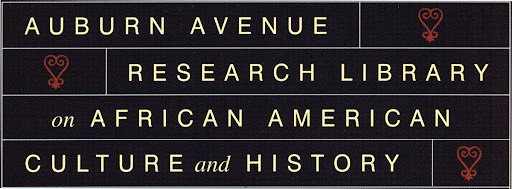 |
| Andrew J. Young Papers, AARL Archives Division |
This responsibility is one that archivists at Auburn Avenue Research Library, like all archival repositories, take very seriously. When donors give collections to a repository, they typically sign a deed of gift agreement that lays out the guidelines for the collection. Donor agreements vary widely- some donors give archives free reign to open anything found in the collection to the public. Other agreements may specify that any sensitive information, such as documents containing personal information, remain closed for a period of time. These agreements are necessary because donors are entrusting our archives with their papers- whether they are family or individual papers, or their life’s work. Often, even if a person is donating his/her own papers, one may not realize everything that it is in the collection. Some collections are so large and, in the case of politicians or business collections that have been handled by many people, the donor may not realize that someone’s family photos or birthday cards or cigarette cartons, may be hiding in a box. In these cases, the archivist may refer to the deed of gift agreement for clarification, or, in the case of the cigarette carton or candy wrapper, simply discard it; unless the carton is very old and in good enough condition that it might make an interesting exhibit piece. You can see where this gets complicated, even with items that might seem like everyday trash.
Of course, there are times when an archivist may find documents of greater concern, either because of privacy issues or because the document’s potential research value is outweighed by its salacious nature. Medical records, adoption records, and disturbing or violent photos are just a few examples- in these cases, archivists would close or destroy the items to protect the parties involved. If the donor is still alive, the archivist may even return the items in question.
As Hunter said, appraisal is a “weighty responsibility” indeed. Every repository is constrained by space and storage concerns and even if we want to, we just can’t keep everything. That is why archivists at AARL spend a great deal of time processing collections, thinking about what visiting researchers might be interested in, and doing our very best to honor those whose papers we’ve collected.
Developing and Maintaining Practical Archives: A How-to-do-it-Manual. 2nd edition. Gregory S. Hunter. New York: Neal-Schuman Publishers, Inc. 2003.
Jessica Perkins-Smith, LSU MLIS graduate student, AARL Archives Intern





